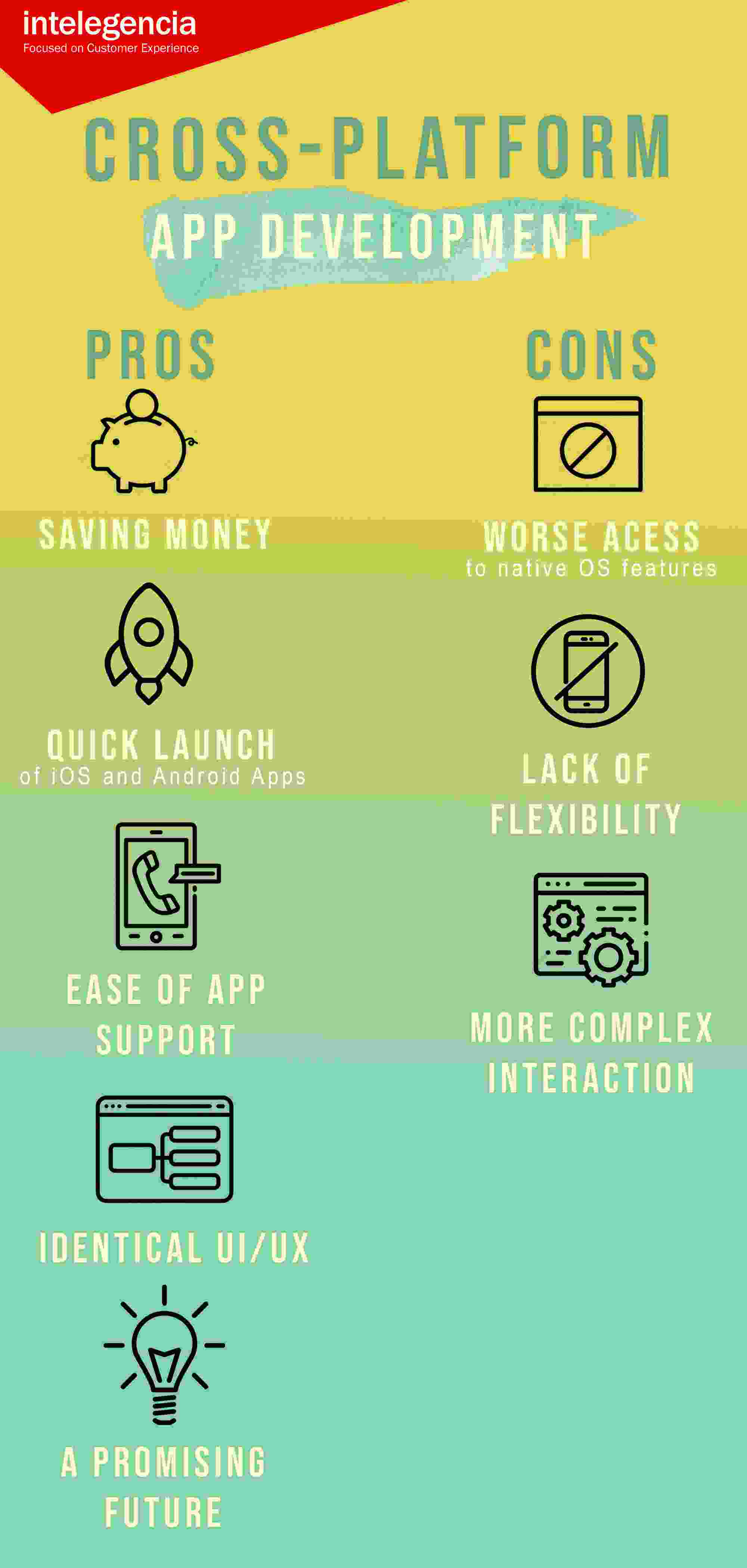Everything You Need to Know about Cross-Platform App Frameworks in 2020
 Rakesh Saini
August 21, 2020
Rakesh Saini
August 21, 2020
Technology is everchanging. What we consider as modern now could become obsolete in two to three years. The pressure to continually keep up is brought by the increasing demands of consumers – particularly on new Smartphone trends.
As of 2020, there are 4.2 billion mobile internet users globally, accounting for almost 58 percent of the population. Nearly every task we do can now be carried out through our handheld devices. Whether it's for work or leisure, no one can deny the value and importance of keeping our mobile phones inside our pockets.
Why the popularity? Mobile applications offer a ton of benefits that center around convenience and accessibility. Smartphones allow us to:
- Access a ton of features with a single application
- Choose between paid and free options to our liking.
- Share experience across other users with a few taps
Most mobile devices have identical features, but users are generally divided into the two most prominent platforms: Google Play Store and the Apple App Store.
As developers cater to two systems, creating apps isn’t an easy feat. This challenge eventually led to the rise of the now-raved cross-platform mobile development.
What is a Cross-Platform App Framework?
Creating a cross-platform framework means building applications that can run on different platforms with a single code base. Simply put, it can be described as “code once, run everywhere.”
Aside from more natural development, cross-platform app development became famous for several other benefits: Lower costs, reusability, and easy integration.

Cross Platform App Development Pros and Cons
The pros and cons of Cross-Platform App Development
Alongside its benefits, Cross-Platform App development comes with its risks. Let’s dig deeper into the pros that we mentioned earlier.
Lower costs
Because developers only need to create one source code, fewer resources are used on labor and supplies. In return, businesses can maximize profit, effort, and time on other tasks.
Reusability
It takes half the time and effort to create a cross-platform app compared to a native framework. The ease of reusability allows developers to meet deadlines and achiever faster turnaround by eliminating roadblocks or technical barriers.
Easy integration
Cross-platform applications are more comfortable to host on app stores because developers only need to meet a single set of requirements. Cloud integration is also much easier, thanks to plugins that offer universal compatibility.
Best Cross-Platform App Frameworks for Mobile in 2020
Each cross-platform framework boasts unique features, with its own set of pros and cons. We surveyed the existing options in the market to give you Intelegencia’s top 10 frameworks for 2020.
- Ionic
Ionic's winning feature is probably considered the most remarkable framework because it allows developers to combine languages to access native platform controllers, and coders can build native-like apps.
Pros:
- Based on a SAAS UI framework
- Addresses the entire DevOps lifecycle
- Vibrant community
Cons:
- Relies on Angular so prior knowledge is crucial
- UI-router isn’t as user-friendly
- Flutter
Created by tech giant Google in 2018, Flutter is a toolkit for building compiled apps in a single code base. It works best on object-oriented language while still supporting others like Java and Swift.
Pros:
- Intuitive
- Quick development
- Positive reviews from industry professionals
- Reduced testing efforts
Cons:
- Missing support for some libraries
- Usability
- Application size
- React native
React Native was introduced by Facebook, which immediately made it the list of top frameworks in the market. Even big companies rely on it for their applications. One of its notable features is its native-like interface, making it easier for developers to adjust.
Pros:
- Allows image editing, video processing, and other operations not part of standard APIs
- Preview the app during coding
- Hot reloading (see changes in code within seconds)
Cons:
- Native components needed to use some functions
- Lags behind native platforms
- Xamarin
Xamarin is known for aesthetics. It offers incredible APIs that allow developers to customize platforms similar to native applications.
Unlike the previous frameworks, Xamarin leverages on C# and .Net, instead of JS libraries and HTML.
Pros:
- Uses C# for coding
- A strong community of contributors
- Single tech stack
Cons:
- Licenses are quite expensive
- Not for heavy graphics
- Limited access to libraries
- Adobe PhoneGap
Previously known as Apache Cordova, Adobe PhoneGap is a simple platform that uses CSS, JavaScript, and HTML5. It’s best used for collaboration as one of its features allows developers to share the app in the development process for feedback.
Additionally, it has an impressive roaster of in-built features such as GPS, Camera, and Phonebook.
Pros:
- Share application with a team of other developers
- Cloud solution
- Plenty of plugins and third-party tools
Cons:
- Not recommended for high-performance apps
- Dependent on iOS SDKs
- Lower on performance (compared to native apps)
- Native Script
Another framework that’s crawling its way up to popularity list is Native Script, a Javascript-based free platform. Its strong point is its feature that allows developers to customize the user interface specific to the type of device (such as iOS or Android).
Pros:
- Large repository of plugins
- Native API access
- Choose among four architectural choices
Cons:
- Runs everything on a single thread
- No hot reload when you change Js/Ts file
No live sync when building web pack
The Developer Experience
Deploying an app with a single command is a gift to many developers. Thanks to cross-platform mobile development, they can bid goodbye to countless requirements, hundreds of code lines, and tons of hours saved on typing.
Generally, developers focus on four factors when choosing a framework. Getting a better experience relevant to these factors is what developers need to work more efficiently and comfortably.
Factor #1: Setup
The setup is a developer’s first impression of a framework. It can influence him about the workflow and how easy (or not!) it is to navigate the interface. It’s safe to say that a confusing setup can make a developer abandon the platform almost instantly.
Factor #2: Documentation
Documenting every part of code is one of a developer's most tedious tasks. An ethical framework should always put ease of working at the forefront, especially for this step of the coding process.
Factor #3: Hot reload
When we visualize an outfit in our head, it doesn’t always translate to reality once we wear it. The same experience happens to developers when they code. As such, it’s crucial to see how bits of code influences the output. A reliable framework can offer hot reload (code previews) within seconds.
Factor #4: Debugging tools
Developers can agree that debugging is just as hard (if not harder) than coding itself. When faced with a ton of code for a single app, it can get even more challenging. Cross application mobile development can help address this by offering debugging facilities or tools.
Rakesh Saini is a Senior Software Engineer II / Tech Lead at Intelegencia. A dynamic, hands-on, detail-oriented, and highly analytical IT professional with over nine years of experience in the industry. When he is not working, you can find him learning something new every day, playing Table Tennis & Carrom. He loves to fail so that he can rise stronger each time. You can connect with him at linkedin.com/in/rakesh-saini-ricky.
Comment(s)
_BlogComment.Message
